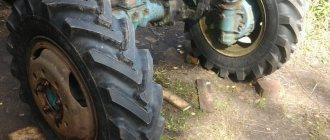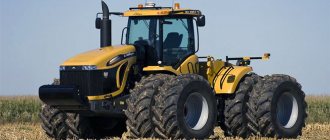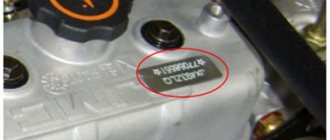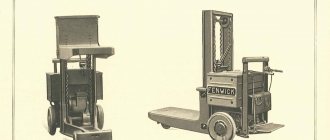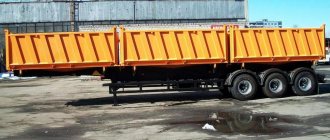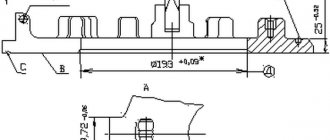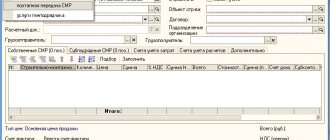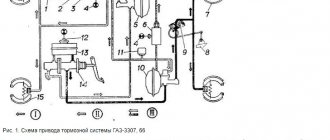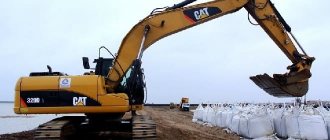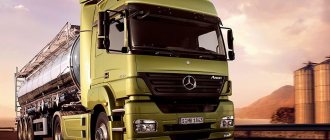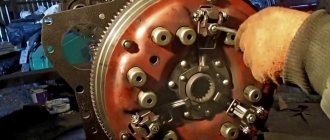In the modern world, tractors are especially popular, helping both in farming and cleaning city streets - this is the smallest part of the functions performed by tractors. One of the most popular models has been produced by the Minsk Tractor Plant for more than 40 years. During this time, MTZ (Belarus) in various modifications has proven itself as a trouble-free device that copes with its tasks in any weather and climatic conditions. Like any vehicle, tractors require maintenance and tire replacement. What are the sizes of MTZ tires? What pressure should be inside the tires?
Appearance and varieties
In appearance, the tractor does not differ from its analogues, but due to the location and size of the wheels, it is one of the most practical and versatile vehicles. The rear wheel has dimensions 16.9R38, and the front one – 14/9R24 (dimensions are given for MTZ-1221). The model has full drive, and allows you to cope with all tasks in any weather conditions.
There are a huge number of models and modifications - some of the most common are:
- MTZ-80 - tire size is: for the front 9.00-20 (7.5-20), for the rear 15.5R. Used in agriculture, utilities, and other areas.
- MTZ-82 - tire sizes are: front - 8.3-20, rear - 15.5-38. It is used during construction work, watering roads, etc.
The models described above hide enormous potential - they are used in almost all areas of life, due to their versatility in mounting various equipment, and have a 4*2 drive. There are modifications of the described models - MTZ-80X (with one front wheel), or MTZ-820 (4*4 drive). In addition to this tractor, the Minsk Tractor Plant produces tractors to suit any needs of the owners, and models can be selected individually, according to the required operating criteria.
Issues of installation, replacement and repair of MTZ wheel rims
The installation of the front and rear wheels of MTZ tractors is carried out in a standard way: the wheel is mounted with a disk on studs (bolts) in the hub, and screwed with conical nuts. However, there are a number of points to pay attention to.
First, before completely removing the wheels, you should first loosen the flare nuts, then jack up the wheel and finally remove the nuts. The wheel is installed in the reverse order - first the nuts are tightened by hand, then the wheel is lowered to the ground and the nuts are finally tightened with a wrench. The nuts are screwed crosswise, making sure that they fit tightly to the disk and are screwed with the force specified in the instructions.
A loose or damaged nut leads to cracks and deformations on the disc. Therefore, you should periodically check that the disks are securely fastened, and if even one nut breaks or is lost, it should be replaced immediately.
When changing the front wheel track, you have to perform the following actions with the disks:
- When switching to the track range from 1200 - 1500 mm to 1500 - 1600 mm (or vice versa), the support disk is removed from the rim and placed on the inside of the stops (brackets). In this case, the recesses in the disk allow it to pass through these brackets;
- When switching to the range of 1600 - 1800 mm, the wheels are completely removed and simply swapped, leaving the correct direction of their rotation (it is indicated by an arrow on the tire). That is, the right wheel is put in place of the left one and vice versa.
The rear wheels make it possible to change the track in steps up to 1800 mm, for which the wheels are also swapped, but in this case the replacement is carried out together with the hubs.
When installing paired (twin) wheels, special spacers are used. In this case, it is often necessary to press short bolts out of the hubs, replacing them with longer ones - this makes it possible to immediately screw the inner wheel disk and spacer onto one bolt. The outer wheel is mounted on studs pressed into the spacer.
Whenever you replace tires and tubes, it is recommended to subject the wheels to simple maintenance: clean and wash, remove nicks, remove rust, remove burrs, and finally paint (to protect against corrosion). If the disk has excessive deformations, then it should simply be replaced with a new one.
Proper selection and operation of wheel rims is the key to achieving the declared characteristics of the MTZ tractor and high-quality performance of any type of work.
Characteristics: MTZ front wheel disk (5 holes) for tire 7.50-20 BZTDiA Article 5.5Fx20 Additional article. 5.5Fx20-3101020 (40-3101010-A3) Catalog group Chassis ..Wheels and hubs Trademark BZTDiA Manufacturer's article 55Fx20 Width, m 0.168 Height, m 0.557 Length, m 0.557 Weight, kg 18.8 Disc diameter (R) 20 Width disk (J) 5.5 Hub diameter (DH) 135 PCD distances 175 Disc offset (ET) 25 Wheel rim type Stamped PCD holes 5 Quantity per package 1 Primary color Silver Trademark (Brand) BZTDiA Additional description
Applicability: Tractors MTZ-510, MTZ-520, MTZ-530, MTZ-570, MTZ-80, MTZ-1005. WHEEL WITH CONSTANT REACH. -Rim seat dimensions, BxD: 139.5x512.8; -Central hole diameter, D1: 135; -Diameter of seating dimensions, D2: 175; -Size and number of mounting holes, dxbxd1: 20x5x25; -Disc offset, ET: +25;
In Russia there are people who own small farms used for commercial purposes, and some of them simply buy a large amount of land for a comfortable life. To cultivate more than 1 hectare of untouched land, agricultural machinery will be required. In such cases, the Minsk Tractor Plant offers a miniature model of the MTZ-82 tractor, popular for private use, which helps fulfill all the owner’s needs for caring for a large piece of land.
Pressure
All-terrain tires are installed on tractors, allowing them to move on absolutely any surface, including deep snow, asphalt, mud and clay. To preserve the rubber, it is necessary to monitor the pressure and condition of the wheels. This is due to the fact that in order to operate Belarus in various conditions, it is necessary to pump up, deflate or pump over the pressure in order to keep the wheels in order and without cracks. Normal pressure without load is: rear - 2.5 atmospheres, front tire MTZ - 1.5 atm. When working with a load, you must refer to the operating instructions - find the required section, select the type of work that needs to be carried out, and select the pressure.
Example: during transport work, the pressure of the MTZ rear tire is 1 atm, when working with attachments - 1.4.
Tire (rubber, wheel) MTZ-80 (Belarus 4x2): front, rear size and recommended pressure
on the conveyor as standard on the MTZ-80 :
Front - 7.50-20 or 9.00-20
Rear - 15.5-38
What pressure must be maintained in the tires on the MTZ-1221?
The exact pressure for each tire is set by the tire manufacturer.
For example, for a 7.50-20 , the manufacturer recommends maintaining a pressure of 160 kPa or 1.6 Bar
Volzhsky Tire Plant (Voltyre) adheres to the same recommendations for its tires: .
15.5-38 rear tire, the recommended operating pressure differs for different modifications, depending on the number of layers: 8/10/16: 1.6/2.0/3.2 Bar respectively.
For products from the Volzhsky Tire Plant (Voltyre), the recommended operating pressure also differs for different modifications, depending on the number of layers: 8/10/16: 1.6/2.0/3.1 Bar , respectively.
To ensure that the tire on your tractor lasts as long as possible, you should carefully monitor the tire pressure, because... Low as well as high pressure has an extremely negative effect on the service life of the tire .
tire pressure optimal ; to do this, follow the recommendations of the manufacturer of your tires.
Still have questions?
Call: +7
Source
Dimensions
Unlike pressure, MTZ tire sizes vary less. It is recommended to use the tire sizes specified in the owner's manual. But the manual contains several dimensions (for different conditions) that are suitable for a particular tractor. For each size, it is necessary to select a rim or disk so that the tractor can fully move and perform its functions. For example, for tires on MTZ-82 with a standard size of 15.5R38, a rim of size DW-14L38 is suitable, and for the front (8.3-20) - W7-20.
Attention: for each model in Belarus, there are factory recommendations for the selection of tires. You can find the data in the vehicle operating brochure.
Operation and maintenance of tires on MTZ tractors
The operating parameters of the vehicle, its cross-country ability, performance, and fuel consumption largely depend on the condition of the tires. That is why their operation and maintenance must be approached with the utmost care and caution.
In order to prevent excessively rapid wear and tear, you need to follow a few simple, but no less effective rules, the essence of which is as follows:
Adhere to the prescribed internal tire pressure standards, which depend on the load and operating conditions of the tractor;- Control the movement at high speed - there should be no steering to the side. If this still occurs, stop and pump up the wheel with the lowest pressure;
- Avoid sudden braking and prolonged slipping;
- Try not to leave the tractor on soil that is contaminated with petroleum products;
- Carry out periodic maintenance and inspection of wheels;
- Do not use the front axle on dry roads;
- Do not allow the wheels to wobble or wobble.
Models
Modern manufacturers of tires for agricultural machinery and special equipment offer a wide selection of products for tractors and other equipment.
Among all the offers on the market, the following should be highlighted, having dimensions for any model in Belarus and not only (MTZ-80 tires are taken as an example):
- Belshina - designed for installation on the rear (drive) axle, has a unique tread pattern, and allows the vehicle to move on any surface. Excellent tire for little money.
- Nizhnekamskshina (KAMA) is a common tire that has proven itself only from the best side. There are models for the front and rear wheels of the tractor. The cost is not very high, and the quality, as always, from this manufacturer is excellent.
- Altai Tire Plant - a huge selection of products allows you to choose tires for any needs, and the price-quality ratio is one of the best on the market. Allows you to put high-quality tires on your tractor for little money.
Important: tires for tractors, in most cases are designated F-2A - rear wheels, F-35 - front wheels. Almost all manufacturers use such designations, and owners choose only the manufacturer. There may be additions to the designations that indicate additional properties of the tire, but the main ones are just that (when not indicated, you need to choose based on the diameter of the wheels).
How to choose the right radius of the front wheels for the MTZ-82
It must be said that the radius of the R20 front wheels installed on this model of the Belarusian tractor is optimal under standard operating mode.
However, the machine can also be used in winter, in conditions of high snow cover, as well as when working in quarries, swamps and other more difficult conditions.
That is why the manufacturer allows drivers to intervene independently and select wheels with other recommended parameters.
- If the equipment makes long journeys along asphalt roads, then the driver can install 7...8 - 18 wheels on it, which will reduce the tread height and the tractor will become more stable on hard surfaces.
- On the contrary, when it comes to using equipment in winter, which requires higher ground clearance, it is permissible to install wheels in dimensions 9...11.5 - 22...24, and the tractor will rise slightly above the ground, and soft mud grips will begin to more confidently pave the way in deep snow.
- When using equipment in the most extreme conditions, when driving through peat bogs or other unsteady surfaces, you will need to create a large torque not only on the rear, but also on the front wheels, which will require the installation of tires 12...14 - 25...26.
When installing wheels of an off-design radius, the driver should be prepared for more frequent routine maintenance to repair the suspension, bearings in the hub, change the oil and other procedures, since an off-design load on all systems provokes rapid wear of all parts.
Where can I buy
You can purchase tires at any specialized store, where tractor owners will be advised by experienced consultants and will help you choose the appropriate model individually for each client.
An analogue of branded centers are sites for the sale of used goods (Avito, for example). But there will always be a risk of such a purchase, because the history of the wheels is unknown - without knowing how the wheels were used, you can buy tires or wheels in poor condition. Therefore, when buying used tires on Avito, owners need to be as careful as possible and clearly understand what tires are needed.
The bottom line can be summed up as follows: in order for tractor tires to serve for a long time and help perform all the functions of the tractor, it is necessary to monitor them properly (pressure, dimensions). If the wheels are properly and appropriately cared for, their service life will increase and you won’t have to buy new ones.
Source kolesnyigid.ru
Many farmers are accustomed to considering agricultural tires as a consumable - a piece of equipment that regularly breaks down and often has to be replaced, so it seems that it is not worth paying much attention to its selection. It's the right size, it's cheap - just take it and let's go. In fact, the tire, especially on the drive axle of the unit, is the most important tool - together with the wheel, it transmits traction force from the engine to the surface. The implementation of the enormous engine power of a tractor, combine or loader, and, accordingly, the efficiency of their use depends on the performance and integrity of an agricultural tire.
Therefore, experienced equipment operators devote sufficient time to choosing agricultural tires. Summarizing all the characteristics of rubber for agricultural machinery, we can highlight the main selection criteria that you should pay attention to:
- Tire size. You need to select a tire exactly according to the factory size. For example, if a tractor has a 710/75R42 rear tire, you cannot replace it with a 710/70R42 that is similar in size and 1.5-2 times cheaper. At the same time, many tire sizes are marked differently - in millimeter or inch versions. For example, a 520/85R42 tire and a 20.8R42 tire are the same thing.
- Tire design. There are 2 types of tires according to the type of structure - radial (marked with the letter “R”; softer and more flexible, withstanding significant speed loads) and diagonal (marked with the sign “-”; more rigid, shock-resistant). They are often interchangeable - for example, 15.5-38 (diagonal) tires on the MTZ-82 tractor can be easily replaced with 15.5R38 (radial) and vice versa. In addition, bias-ply CX tires are inexpensive compared to their radial counterparts. But in some cases, tires of the same size in different versions may differ in static radius and diameter. Therefore, it is not worth pairing “radial” and “diagonal”.
- Purpose of the tire. A manufacturer can produce several types of tires with different patterns and purposes in one standard size. For example, the BKT brand has tires 23.1-26 (suitable for HTZ-170) models TR-135 (for agricultural machinery, standard “Christmas tree”), TR 387 (for construction workers, shallow “checker”) and FS-216 (for skidders, large straight lugs). You should definitely pay attention to the pattern of the tire and its purpose.
- Tire load index. When purchasing tires, you should make sure that they can withstand the required load. Each tire has a load capacity index - for example, 172A8. These numbers in a special table correspond to the weight that the tire can withstand at a certain speed - in this case it is 6300 kg at 40 km/h.
- Tire brand. Tires of the same size from different factories may differ in linear dimensions and tread pattern (for example, the static radius of the Michelin Axiobib 800/70R38 tire is 894 mm, for the Mitas SFT 800/70R38 it is 912 mm). Therefore, it is better to pair tires from the same manufacturer, ideally the same model. Also, no matter how trivial it may sound, the “cooler” the brand, the better the quality of the tire - it lasts better and longer.
- Salesman. You should not buy agricultural tires secondhand or from unknown or unproven companies in the market - this is fraught with major troubles. At current prices, agricultural tires from a direct supplier or an official dealer are the best choice, guaranteeing the delivery of exactly the product that the buyer is counting on.
Mistakes when purchasing tires in agriculture are fraught with significant financial losses. Therefore, for the smooth and smooth operation of the iron worker, choose his rubber “shoes” wisely.
We remind you that Diagen LLC has one of its main activities - the sale of tires for all types of agricultural and special equipment.
Our managers are ready to help you with the choice of tires for your favorite equipment. Contact us!
Source sdiagen.ru
In terms of the number of standard sizes and design options, agricultural and special tires occupy a special place. Fitting diameters vary from 5 inches to almost infinity. Selecting tires for special equipment is a non-trivial task even for experienced sellers. Let's look at the main nuances that occur most often.
Tire design features
As you know, tires are radial and diagonal. Solid tires are also produced for loaders. Both radial and bias-ply tires are available in the same sizes. The simplest example is tires for MTZ-80, MTZ-82 on the rear axle in size 15.5-38. In this size, diagonal tires are produced by Voltairprom and the Altai Tire Plant. They are designated 15.5-38 F-2AD. Radial tires are produced by the Nizhnekamsk Tire Plant, Bobruisk Tire Plant and the same Voltairprom. They are designated 15.5R38 F-2A.
What is the advantage of bias tires? Walkability on dirt roads and across fields is no worse than radial ones, and the price is significantly lower. Why buy a more expensive radial tire then? A radial tire wears less on asphalt. In addition, it is even softer and more comfortable.
Regarding solid tires, which are installed instead of pneumatic ones on forklifts, the following can be said. Solid cast ones can withstand significantly greater loads than pneumatic ones; they cannot be punctured. A significant disadvantage of solid tires is that they do not absorb shock loads. Because of this, the chassis of the loader itself and the hard surface on which the loader drives are broken. The main application for solid tires is in quarry loaders or equipment operating on hard ground, but not on asphalt and concrete.
Features of tread patterns
Essentially, there are five types of tread patterns for agricultural and special purpose tires: “Christmas tree”, “stick”, “wave”, “track” and “smooth”. It is impossible to count all the varieties of these basic designs. There are even mixed designs. An appropriate tread pattern is made for the specific operating conditions of the equipment. Below are examples of these drawings.
"Hockey stick"
"Wave"
"Tracks"
What to choose for your special transport? The herringbone pattern is in most cases used on the drive wheels of equipment operating on soft ground. A thick herringbone pattern is used on mixed surfaces.
A stick pattern is better suited for construction sites - with good self-cleaning properties, such tires wear out less on abrasive surfaces.
Tires with a large wave pattern are designed for quarries and similar conditions.
For trailing and steering tires, a “track” pattern is used. Tires with such a pattern hold the direction better and do not “yaw” when driving.
Tires with a specific “smooth” tread pattern are used extremely rarely. They are found on road rollers and quarry equipment with minimal speed ratings.
Load indices and speed indices
Most special equipment is operated at low speeds. Therefore, tires for it have a speed index of 30-40 km/h. If your tractor can reach high speeds by design, then this indicator will be significant.
The load index is important not only for tires used for transporting goods. The total weight of tractors and loaders based on them is completely different. Therefore, even the most common tire 15.5-38 F-2AD is available with a load index of 133 and 137. Combine harvesters, depending on the configuration, can have different sizes of the header and grain bin. Accordingly, the tires for them will have different load capacities, although they will be of the same size.
In order for agricultural machinery to compact the soil on the field less, the pressure in the tires of tractors and combines is reduced. The area of the contact patch increases and the pressure on the soil decreases. Not every tire can withstand operation in this mode.
Layer class
This parameter is usually indicated at the end of the marking before the name of the manufacturer. The ply class may be designated 10PR, 6PR, 8PR. The higher this indicator, the stronger the tire frame. However, despite the name, the ply class does not reflect the number of layers in the frame. This discrepancy is associated with achieving greater frame strength not by increasing the number of cord layers, but by improving materials and technologies.
At the end of the marking the manufacturer is indicated, which allows you to find tables with comprehensive information regarding a given tire brand.
